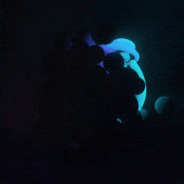That's cool :-) I once had a PPL-A and flew around guests in a PA28 from a southern German club, but gave up that hobby in favour of sailing the ocean. But that got too expensive. Now i'm doing this sort of programming as a hobby and my goals are similar to yours, only i got humble in the past two years, slowly understanding the magnitude of such an enterprise.
If you haven't already done so, also look at FlightGear , they may be less "graphical" than MS but from what i understand their atmospheric modelling and flight dynamics are superior. But i allways found it difficult to compare simulator flying with real flying (apart from the procedures) because pc simulators imo lack decisive senses.
Here's what i have so far (source on github): a basic framework, render arbitrary heightmaps, cd-lodding the terrain, and basic shading. Right now i am working on cascaded shadow maps and atmopsheric scattering for the nice effects. May main problem is that everything terrain lod is done in shaders with my chosen cdlod, incuding positions. Since our consumer grade graphics cards don't support double float precision with enough performace, i can't really render a planetary sized ellipsoid with a reasoable frame rate (yet). This is because the lod algorithm knows no fixed precalculated mesh that could benefit from the gpu's 64bit abilities. But i am expecting that to change soon ™ because of competition on the market.
So, in your case, rendering a height- or displacement map right away may be a bit too early. I started with learnopengl.com and can recommend that. Work through the tutorials, don't miss out. I had to learn C++ at the same time, if that's not the case it might flow faster. You must definitely get into the shader stuff, there is no way around. Also, grab the Red Book (OpenGL Programming Guide 9th ed.) for an overview over the more modern OpenGL 4.5.
Yeah, when you're through with the basics of opengl (other apis are not fundamentally different, the learnt is not vain in the near future), look at other's source code and how they have tackled things. Nvidia, AMD, Intel, they all have repositories for the open source community where they make their ideas available (i'm just studying cascaded shadow mapping from an intel rep).
And specific questions are better than general ones if it comes to “i'm stuck, how do i proceed”.
I forgot: you probably know but there are a quite a few online sources for imagery and other geo data, commercial (e.g. esri) or not (e.g. nasa worldwind), readily georeferenced.







